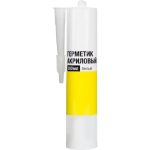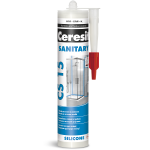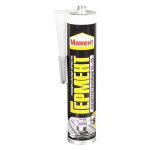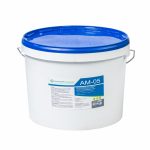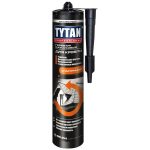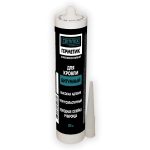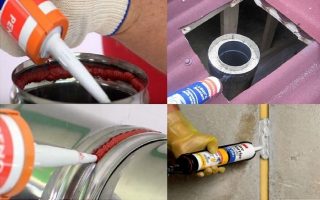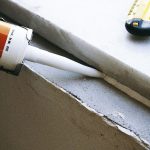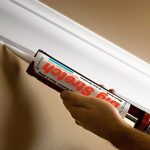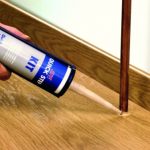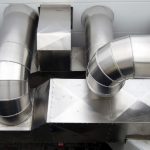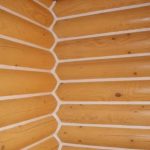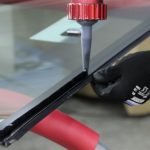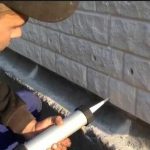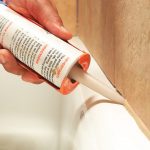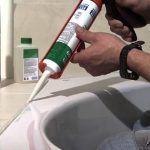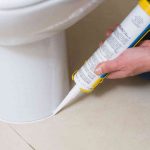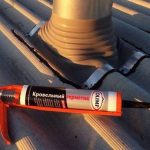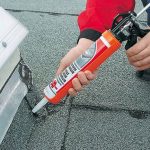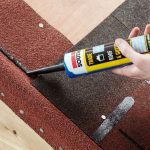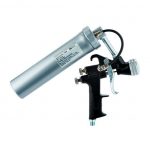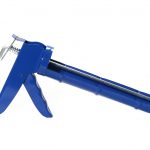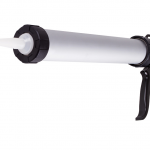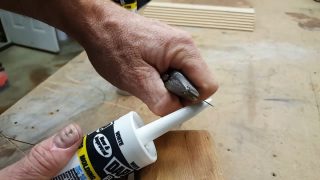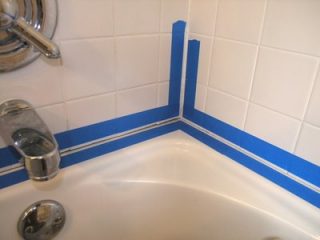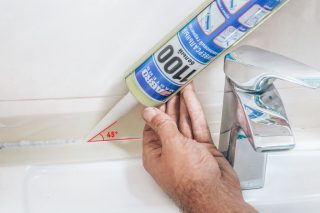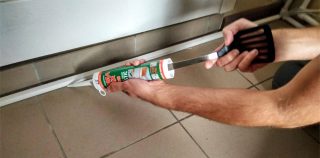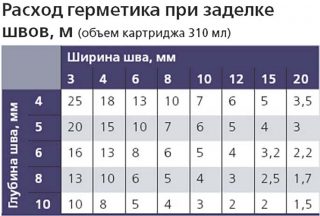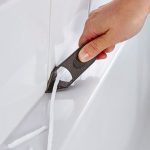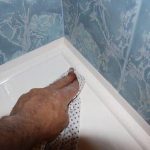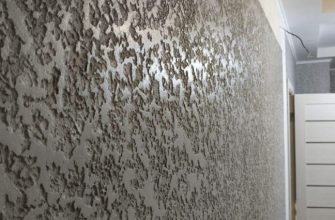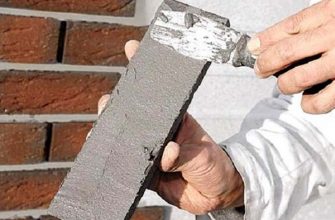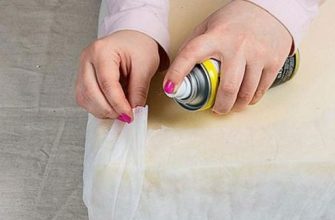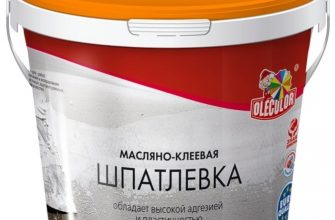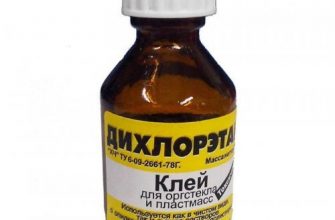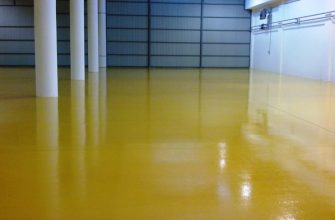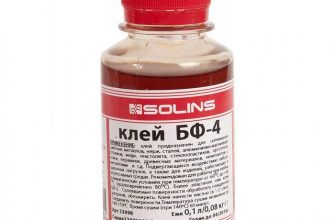Sealant is a material intended for waterproofing, sealing the filling of seams, joints and technical gaps of any structures. It is applied on bolted, riveted, butted and any other types of joints. Different compounds are used to process seams between different materials.
Description and types of sealants
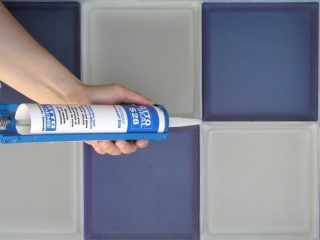
The fundamental difference between the sealant and the usual finishing solution is the mechanism of work. The tile mixture, for example, also waterproofs the joints to some extent and fills them. However, it is a mixture of finished products in a dissolved form. As the moisture evaporates, the substances acquire a solid structure and fill the seam, but the composition itself does not change.
The sealant is manufactured based on polymers and oligomers. The components in the initial mixture are, as it were, in a semi-finished form. During operation, the ingredients are mixed. On contact with oxygen and moisture from the air substances polymerize... The composition usually increases in volume, fills the seam and gradually hardens as it dries. However, curing is not due to solvent evaporation, but to the completion of polymerization.
The sealing layer is formed directly on the joint surface, so that the joint dimensions and shape do not affect the properties in any way. The polymer layer is a single whole, therefore it repels water, grease, aggressive chemicals due to its nature, and not the structure of the material.
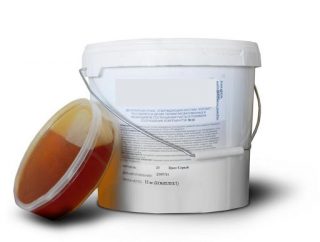
Typically, the sealant is a fairly complex mixture. First of all it classified by the number of ingredients.
- One-component - the composition is ready for immediate use. It sets and dries quickly, and is quite durable. Most often used in everyday life when installing plumbing: bathroom, toilet, sink.
- Two-component - the ingredients are mixed after removing the separating barrier just before use. Usually the shelf life of such a product is much longer.
- Multicomponent - as a rule, a special composition with special properties: the ability to withstand high pressure, absolute waterproofness, resistance to strong acids, etc.
Differentiate between sealants and by composition, which determines the purpose and characteristics of the mixtures.
- Acrylic - the most famous household option. Odorless, quick-setting, safe for health. However, he is afraid of ultraviolet radiation and does not withstand constant contact with water - it delaminates.
- Silicone - based on organosilicon rubber compounds. Differs in high adhesion and elasticity. Acid sealants are produced that are not used for metal and natural stone, and neutral - universal.
- Polyurethane - provides maximum strength, durability, reliability of the seam. Not afraid of heat and frost, ultraviolet radiation, temperature changes. It is toxic until it hardens completely, so you need to process the seams with gloves and a respirator.
- Thiokol - based on polysulfide rubber. Rather a professional option than a household one. Waterproof, alkali and acid resistant. It has a long service life, but it is expensive.
- Rubber - has high elasticity, does not corrode and does not lend itself to the action of mold and mildew. However, it is afraid of mineral oils and is incompatible with some types of plastic.
- Bituminous Is the oldest petroleum based sealant. Bituminous mastic is not very durable, but very cheap, the coating is easily renewed at any time. Used only for external work.
Other types of sealant are also distinguished. However, they are used only in industry and in special construction work.
Scope of application
Acrylic sealants are used:
- for sealing joints between tiles, sheets and pipeline joints;
- for sealing cracks in window sills and frames;
- when installing skirting boards, door frames, windows;
- for repairing furniture, restoring wooden floors, sealing substrates.
Polyurethane used much more broadly. However, here one has to take into account the rather high cost of the material. Added to the listed works:
- sealing of any facades - block, ventilated, insulated;
- sealing mezhventsovy seams in log cabins and houses from a bar;
- sealing pipes, ventilation, air conditioning systems, as well as plumbing, including re-sealing;
- pasting glass;
- any work on the sealing of metal and stone surfaces.
Application area silicone fewer compositions. Such sealants, especially acidic ones, cannot be taken for sealing joints in metal and stone structures. Silicone mixtures are preferred in everyday life, more often used inside the building. They are more expensive than acrylic, but more durable. In addition, sanitary silicone mixtures are much more reliable when sealing plumbing fixtures and pipelines.
Bituminous sealants are used mainly for waterproofing: foundations, nodal joints, roofs.
What will be required from tools and materials
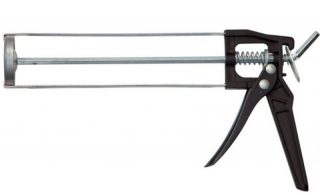
Sealants are sold in cans, cartridges, cans. The first 2 options are much more convenient, since for application you can use not a spatula or a brush, but a special nozzle - a gun.
Varieties of pistols:
- Skeletal - a simple mechanical device for household needs.
- Half-hull - with a toothed or smooth stem. Allows you to more accurately dose the sealant and prevents damage to the tube itself.
- Tubular - rather a professional model. Designed for a large amount of work. The main difference is the ability to work with a sealant in a film package, and not in a tube.
- Pneumatic - the most expensive option for industrial use. Equipped with a pressure regulator, connected to the air supply line. Works with packaged and bulk sealant.
- Rechargeable - to all the listed advantages, independence from the air supply line is added, so that you can work in the most inaccessible places. In addition, the accuracy of the feed level is much higher here.

Rules for working with sealant
Despite the wide variety of compositions and their purpose, the scheme for using sealants is general. The application method differs - with a gun, without a gun, with pressing, surface preparation - with a primer, without it.
Also, the conditions for performing work depend on the composition. The silicone-based mixture is safe for health. The polyurethane sealant is toxic, so you have to wear a mask and gloves.When applying a high-temperature bitumen composition with a hot method, the safety rules are even more complicated.
How to open
- The upper part of the container is cut off with a construction knife.
- Cut off the tip of the applicator. The wider it is, the wider the sealant strip will be.
- Insert the cartridge into the gun. Operations are detailed in the product instructions.
- When the trigger is pulled, the mixture should be released from the tube. Pressing is stopped as soon as a sealant is seen in the hole of the applicator.
The strip should be 1.2 mm wider than the slit.
Surface preparation
- Cleanse: removes dust and dirt, removes residues of the product or finish. Debris is sucked out of the joints and cracks with a vacuum cleaner.
- Spaceso around the joint is sealed with masking tape... This procedure is performed during the installation of equipment and building structures.
- It is recommended to do degreasing, especially if this is not the first sealing, but part of the repair work.
Masking tape protects the area around a joint or crack. For flooring, for example, it is unnecessary.
How to apply with a pistol
- The gun is positioned at an angle of 45 degrees to the gap to be filled.
- Gently squeeze the trigger, squeezing out the mixture. The pistol is being pulled over.
- It is advisable to squeeze out the required portion in one continuous line. The optimal application speed is 2-3 cm per second. It is also impossible to lead the pistol too quickly: the strip turns out to be thin and does not fit snugly.
- After the end of the work, release the trigger, press on the locking lever. Be sure to screw a cap onto the tip of the applicator so that the mixture in the tube does not dry out.
- Remove excess sealant immediately. Use a spatula and napkin. The spatula is constantly moistened with soapy water.
- Remove the masking tape from both sides of the seam and spray the area with soapy water - preferably from a spray bottle. With a spatula or finger, if the hand is in a glove, level the edges of the strip so that they hide the cracks.
- If irregularities are found or formed, they are cut off with a spatula and smoothed again.
The sealant grabs quickly, dries up within 1-2 days. At this time, the site cannot be operated.
How to apply without a gun
If there is none, take medical syringe 20 ml... A rod is pulled out of it, then the tip of the applicator is cut off, and the syringe is applied to the hole and held until it is filled with the mixture. Then the rod is returned to the syringe and the sealant is applied to the desired area.
This method is suitable only for very small seams, since you need to act quickly, and the technology involves several operations.
Consumption of sealant
The same can be done using online calculator... In this case, maintaining the data is sufficient. Apply also tables, where the volume of the sealant is calculated taking into account the thermal coefficient of expansion.
How to remove excess composition from the surface
Fresh sealant remove with a damp sponge, cloth, PVC scraper. This must be done as quickly as possible, since after complete curing of the composition, it is more difficult to remove the remnants.
Cured sealant removed mechanically or chemically, or a combination of both.
- Mechanical - the protruding parts of the sealant are cut off with a knife. If the layer of the composition is small, use sandpaper or an abrasive.
- Chemical - solvents are used.For acidic sealants, they use solvents based on acetic acid, for alkaline ones - alcohol, for neutral ones - products based on white spirit, ketones, as well as gasoline and kerosene.

